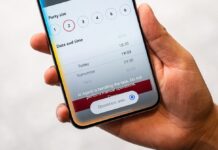Just days after the United States assassinated Iranian general Qasem Soleimani, US Customs and Border Protection reportedly detained more than 60 Iranian Americans and Iranians, including children, at the US–Canada border. Multiple sources present claim that while some of those detained were held, in certain cases for up to 10 hours, CBP confiscated some of their phones, ordered them to hand over their social media passwords, and questioned them about their political views and social media activity.
As stand-alone incidents, such reported treatment of US citizens and travelers is disturbing. But what makes this more acutely alarming is the fact that this experience is becoming increasingly common. More and more, US officials are requesting travelers’ social media information and questioning them about their online speech, all of which feeds the government’s growing social media surveillance apparatus.
WIRED OPINION
ABOUT
Allie Funk is a research analyst for Freedom House’s Freedom on the Net project. She is an expert on human rights in the digital age, focusing on developments in the US and Asia.
Nowhere is this surveillance more evident than in the country’s sprawling border areas. The Department of Homeland Security, which houses CBP, claims special surveillance authority not just at the border itself but in larger “border zones.” These extend 100 miles from the entire US perimeter, allowing DHS to effectively assert extrajudicial surveillance powers over more than 200 million people. In several recent cases, immigration authorities and other government officials have abused their powers by seemingly vetting travelers for their political views and monitoring peaceful protesters, civic groups, and journalists.
Immigration and Customs Enforcement, for example, monitored social media to gather information on groups in New York City that protested the Trump administration’s policies on immigration and gun control in July and August 2018. Separately, in March 2019, leaked documents revealed that CBP had created a list of 59 US and foreign immigration activists, journalists, lawyers, and Facebook group administrators who would be targeted for greater scrutiny at the US–Mexico border. These are clear affronts to the First Amendment protected activities of free speech and the freedoms to peacefully associate and assemble. Individuals who know their online activity is being tracked may be less likely to participate in political and social organizations, while authorities could use access to this information to suppress nonviolent demonstrations before they even begin.
This kind of invasive surveillance is growing at an astonishing rate. Between 2015 and 2018, the number of warrantless searches of travelers’ electronic devices conducted by CBP increased by 292 percent, even though entries into the US rose by only 3 percent in the same period. The agency has even purchased technology from the Israeli company Cellebrite to bypass encryption and passwords and extract data as quickly as possible from travelers’ phones and computers.
Multiple journalists have been caught up in these searches and have reported that border agents combed messages with journalistic sources in at least one case. For both journalists and ordinary travelers alike, the increased likelihood of having phones searched and social media analyzed could incentivize self-censorship if they fear their speech could be used against them.
Unchecked monitoring can also disproportionately affect religious and ethnic minorities. In another alarming example, a Palestinian student who had been admitted to Harvard University had his visa temporarily revoked after CBP searched his electronic devices and questioned him about political content posted by other users on his social media timeline. CBP claimed the decision to deny entry was “based on information discovered during” inspection, yet wouldn’t specify further. It was after significant press coverage that the student was allowed to return to Harvard.
Such increased surveillance is not confined to DHS. From federal and local law enforcement to the US Department of State, government entities across the country are surveilling social media, often deploying automated technology with technical limitations, all with minimal public debate or independent oversight. Natural-language processing tools, for example, have been shown to accurately analyze the text of social media posts only 70 to 80 percent of the time.
If the goal of these practices is to protect national security, there is little, if any, public evidence that warrantless searches of electronic devices and the mass monitoring of social media is more effective than less invasive alternatives for keeping people safe. Instead, social media content, particularly slang or speech that is not in English, is difficult to interpret, making it susceptible to misinterpretation and increasing the likelihood of people being arbitrarily targeted.








